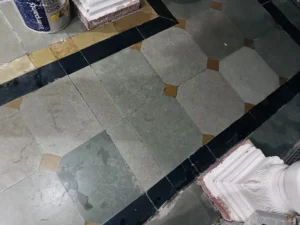Which is Better: Kota or Granite?
When it comes to choosing the right stone for flooring, countertops, and other architectural applications, homeowners and architects often find themselves weighing the merits of Kota stone against granite. Both stones are popular for their durability and aesthetic appeal, but they each come with their own set of advantages and considerations. This article explores the characteristics, benefits, and drawbacks of Kota and granite to help you decide which might be the better choice for your specific needs.
Kota Stone
Kota stone is a type of fine-grained limestone that originates from the Kota region in Rajasthan, India. It is known for its earthy tones, which range from green to blue to brown, and its ability to retain its look for years. Here are some key aspects of Kota stone:
Advantages:
- Cost-Effective: Kota stone is generally more affordable than granite, making it a popular choice for those on a budget.
- Cool Surface: It remains cool underfoot, which is a significant advantage in hot climates.
- Non-Slippery: Its natural texture provides a non-slip surface, making it suitable for flooring, especially in bathrooms and kitchens.
- Versatility: It can be used in various areas of a home or building, including floors, walls, and staircases.
Drawbacks:
- Porosity: Kota stone is more porous than granite, which means it can stain more easily if not sealed properly.
- Maintenance: It requires regular maintenance, including sealing to prevent water absorption and staining.
- Limited Colors: The color options are generally limited to shades of green, blue, and brown.
Granite
Granite is a hard, igneous rock composed mainly of quartz, mica, and feldspar. It is quarried worldwide, with India, Brazil, and China being leading suppliers. Granite is prized for its strength, durability, and the vast array of colors and patterns available.
Advantages:
- Durability: Granite is exceptionally hard and durable, resistant to scratches, heat, and other forms of wear and tear.
- Low Maintenance: Once sealed, granite is easy to clean and maintain, resisting staining and bacteria growth.
- Aesthetics: With a wide range of colors and patterns, granite can add a luxurious feel to any space.
- Resale Value: Installing granite, especially in kitchens and bathrooms, can increase the resale value of a property.
Drawbacks:
- Cost: Granite is typically more expensive than Kota stone, both in terms of the material and installation costs.
- Cold Surface: Granite can feel cold underfoot, which may not be ideal in cooler climates without in-floor heating.
- Weight: Its heaviness requires sturdy support, especially for countertops.
Making the Choice
The decision between Kota stone and granite ultimately depends on your specific needs, preferences, and budget. If cost-effectiveness and a cool surface are your top priorities, Kota might be the way to go. However, if you’re looking for durability, a wide range of colors, and an increase in property value, granite could be the better investment.
Consider the intended use, location, and overall design of your space when making this decision. Both Kota and granite have their unique advantages and can significantly enhance the aesthetic and functional value of your property when chosen wisely.


